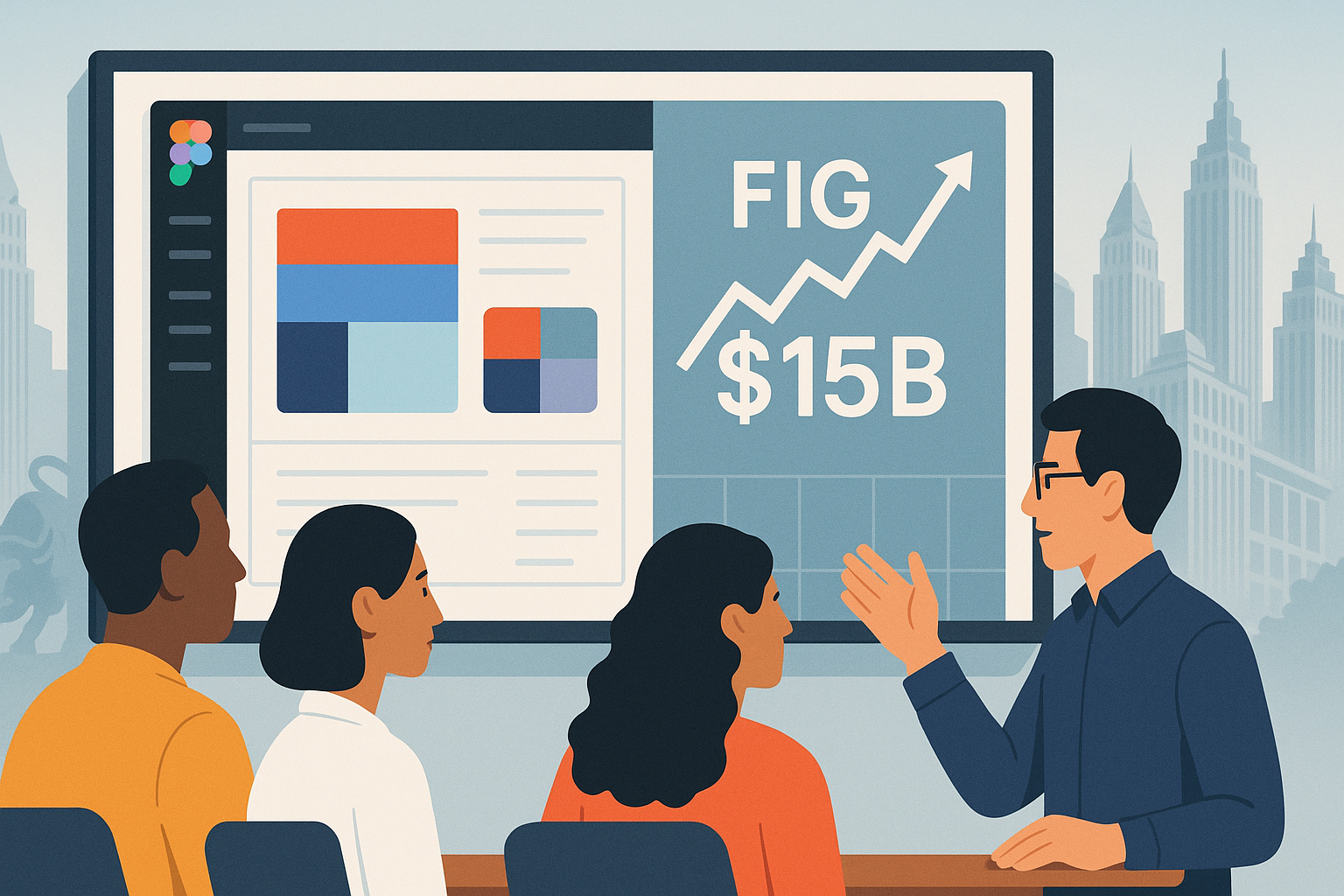Figma is taking the plunge into public markets this week, seeking a $15 billion valuation that has me thinking about the strange economics of modern tech. Here we are, midway through 2024, with the IPO market finally showing a pulse after years on life support, and it's a company that essentially helps people make digital stuff look good that's leading the charge.
But that's drastically underselling what Figma has become.
The company has quietly transformed into the digital equivalent of oxygen for design teams worldwide. When 95% of Fortune 500 companies use your product—as Figma claims in its filing—you've gone well beyond "useful tool" into "critical infrastructure" territory. That's the kind of market penetration that makes investment bankers do little happy dances in their Ferragamo loafers.
The Drug Dealer Business Model (But Legal)
What makes Figma brilliant—and I've been watching this strategy play out since covering their Series C round years ago—is their devastatingly effective freemium approach. Individual designers get hooked on the free version, then inevitably need to collaborate with teammates, triggering the need for paid subscriptions.
It's the "first taste is free" approach, executed with ruthless efficiency.
The numbers tell the story: 90% gross margins. Let that sink in. Most companies would sacrifice their most prized office plants for that kind of profit structure.
What's particularly interesting about their strategy (having spoken with several product managers who've implemented Figma across their teams) is that they've largely eliminated the traditional enterprise sales playbook. The S-1 filing reveals that 70% of their enterprise deals start with a single user on a self-serve plan. The product literally sells itself, spreading through organizations like a very profitable virus.
$15 Billion: Bargain or Bubble?
Let's talk about that valuation, shall we? At roughly 20 times trailing sales, Figma isn't cheap. It's not dot-com-bubble expensive, but it's definitely in the "premium craft cocktail at a rooftop bar" pricing tier. Adobe, by comparison, trades at about half that multiple.
The bull case? Growth, baby. Figma's been adding revenue at roughly 50% year-over-year—the kind of trajectory that makes growth investors weak in the knees. They've also turned profitable, showing $45 million in net income for Q1 2025 with a healthy 17% operating margin. And with $1.5 billion in cash post-IPO and virtually no debt (well, unless you count their somewhat bizarre $100 million Bitcoin ETF holdings—which feels like the corporate treasury equivalent of a startup founder buying a Tesla before the product launches), they've got room to maneuver.
But here's the rub. That 20x multiple doesn't leave much margin for error. If growth slows even slightly... look out below. Just ask Adobe shareholders what happens when high-flying software stocks miss earnings by even a fraction. It ain't pretty.
The Crowded Design Playground
Figma isn't alone in this sandbox. Adobe clearly covets this market—they tried to swallow Figma whole for $20 billion in 2022 before regulators raised their collective eyebrows. Then there's Canva, currently valued at $26 billion in private markets, which targets a slightly different customer base but increasingly offers overlapping functionality.
And hovering over everything like a technological sword of Damocles is AI. On one hand, Figma is incorporating AI features that could make their platform even more sticky. On the other... well, what happens when AI starts replacing some of the designers who use Figma? It's the classic innovator's dilemma—building tools that might eventually cannibalize your own market.
Having covered the design software space since 2019, I've seen this movie before. Tools get more powerful, teams get smaller, and the vendors scramble to expand their offerings to compensate for the shrinking user base.
IPO Details That Raise an Eyebrow (or Two)
A couple things stand out about this offering. First, Figma is using an auction-style allocation method, which should theoretically lead to more accurate pricing. Smart move.
Second—and this is where my skepticism kicks in—CEO Dylan Field will maintain majority voting control through a dual-class share structure. Another tech founder joins the "I know best" governance club pioneered by Zuckerberg and the Google guys. History suggests mixed results with this approach.
Perhaps most telling? Of the 37 million shares being offered, about 24 million are coming from existing shareholders selling. When insiders are cashing out this much at IPO... well, it's not necessarily a red flag, but it's at least a yellowish-orange one. These folks know the business better than anyone, after all.
The Bigger Picture
What makes Figma fascinating—beyond the eye-popping numbers—is what it represents: the continued unbundling and specialization of software. They identified a specific workflow (collaborative design) and built something purpose-built that runs circles around general-purpose tools.
This is the same playbook that Slack, Zoom, and countless others have followed. Find a workflow that's poorly served by existing tools, make something 10x better, and watch the money roll in.
The million-dollar question (or in this case, the $15 billion question) is whether Figma can keep expanding both its user base and product offering without hitting the ceiling of its core market. Their S-1 estimates their total addressable market at $33 billion, suggesting they could grow roughly 40x from current revenue levels.
That seems... ambitious. Then again, Microsoft probably didn't imagine Office would become a $40+ billion annual revenue business when they first shipped Word on floppy disks.
In the meantime, Figma will likely make a splashy debut on the NYSE under the ticker FIG. Whether it turns out to be a financial fig leaf covering an overvalued company or a deliciously profitable investment remains to be seen. But one thing's certain—Wall Street is paying attention to this design darling.
And so am I.
